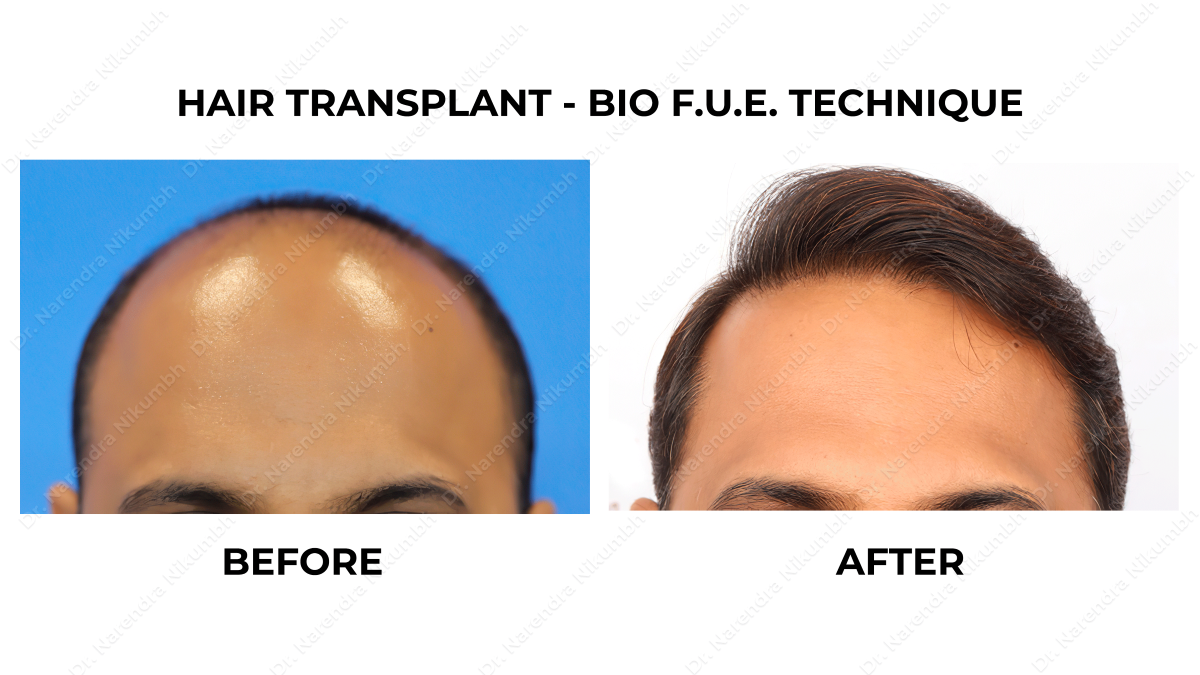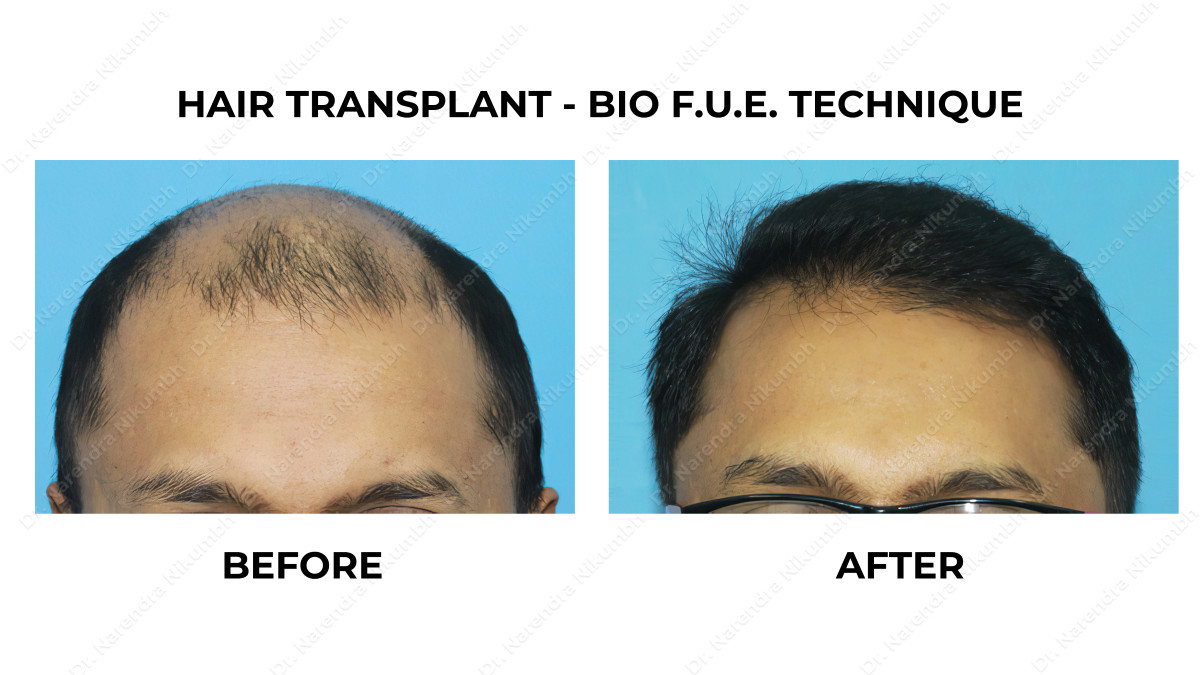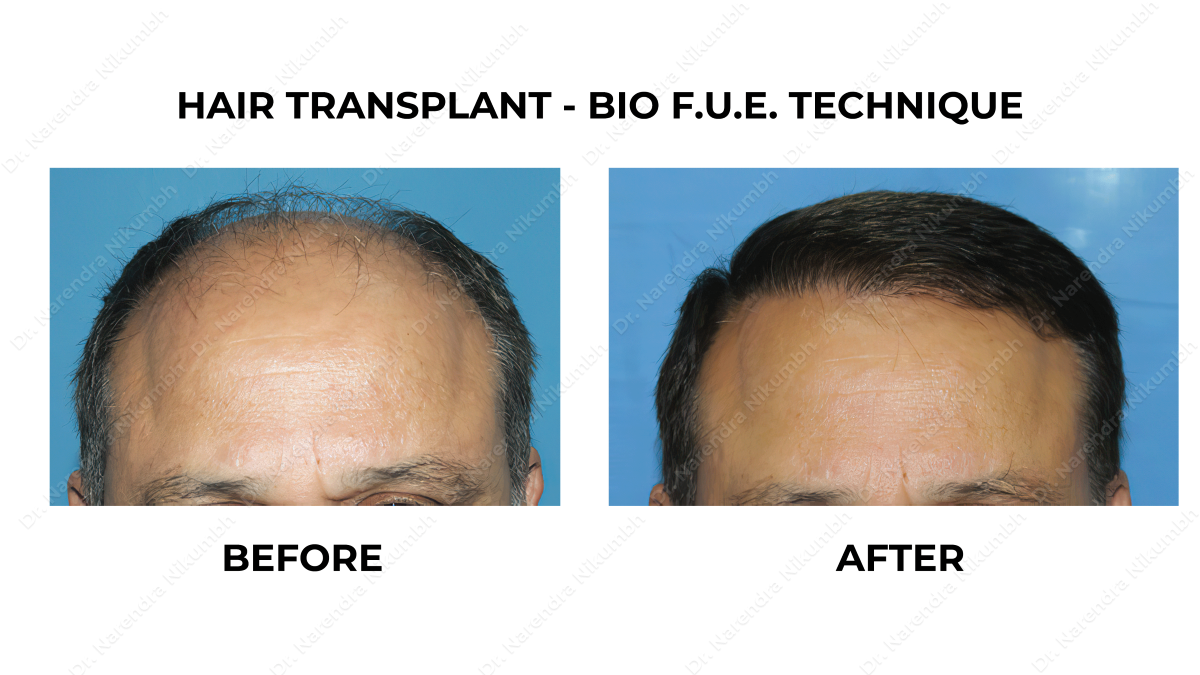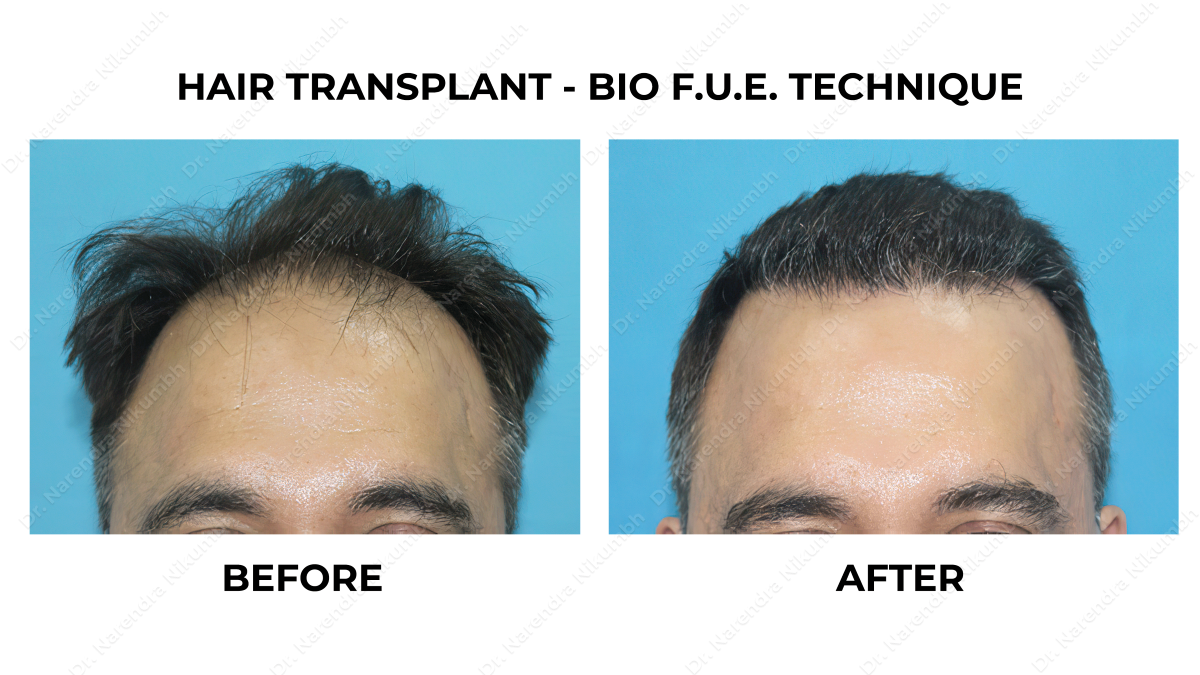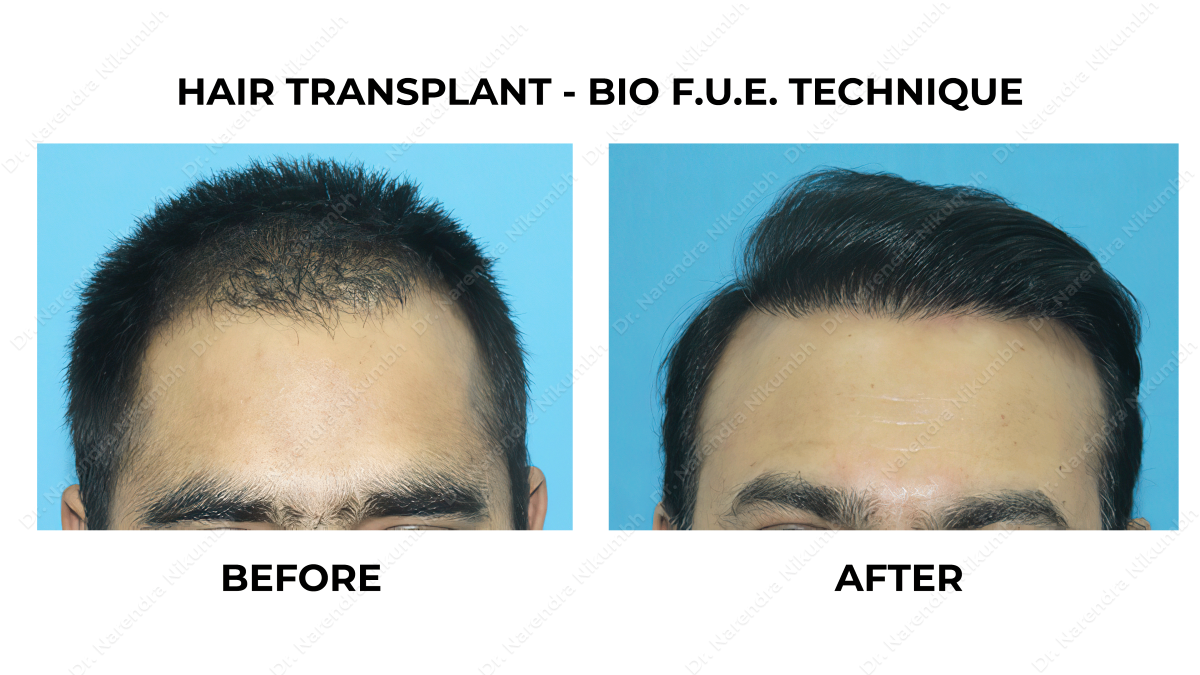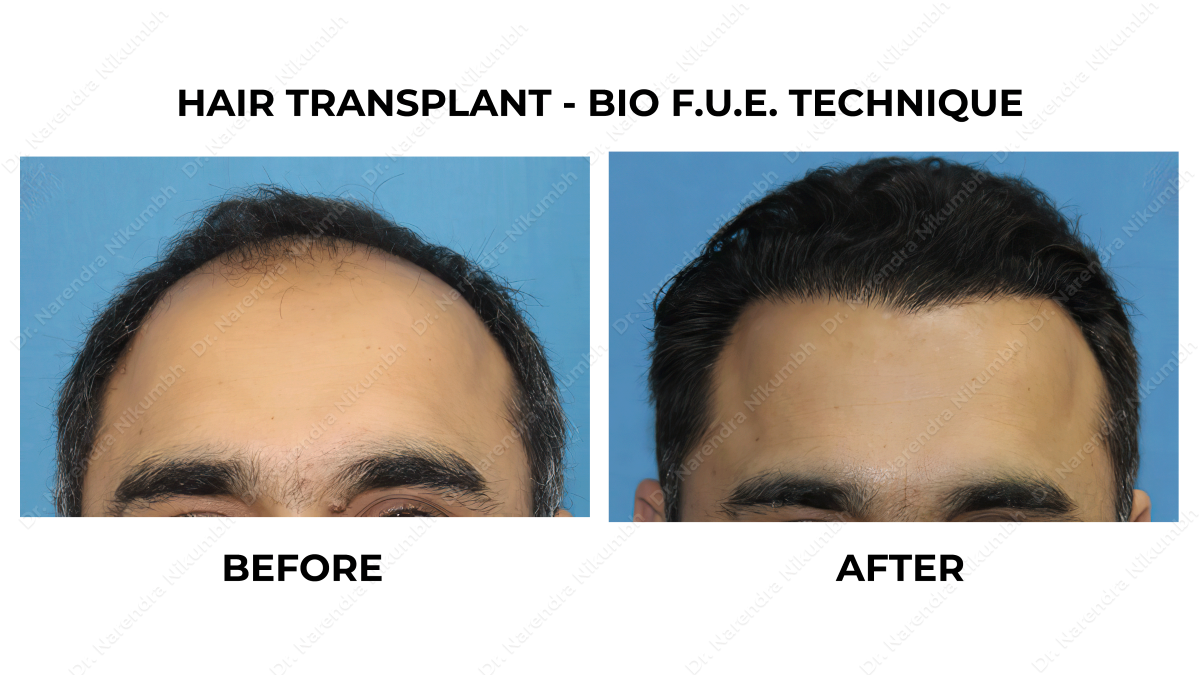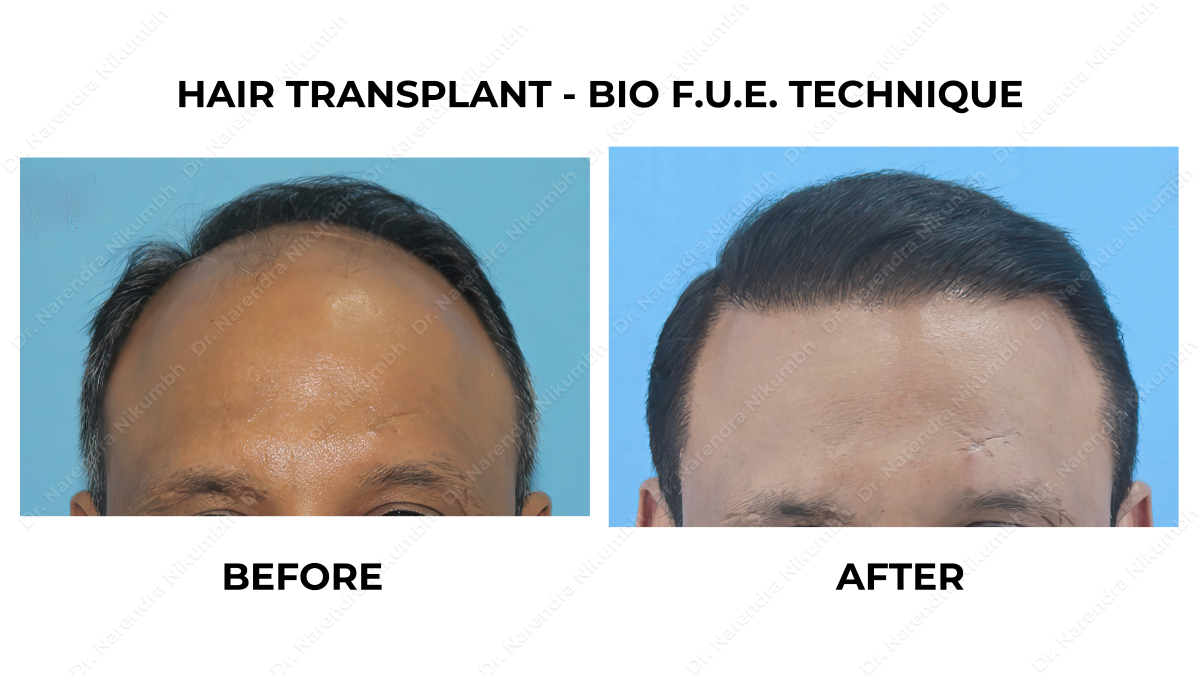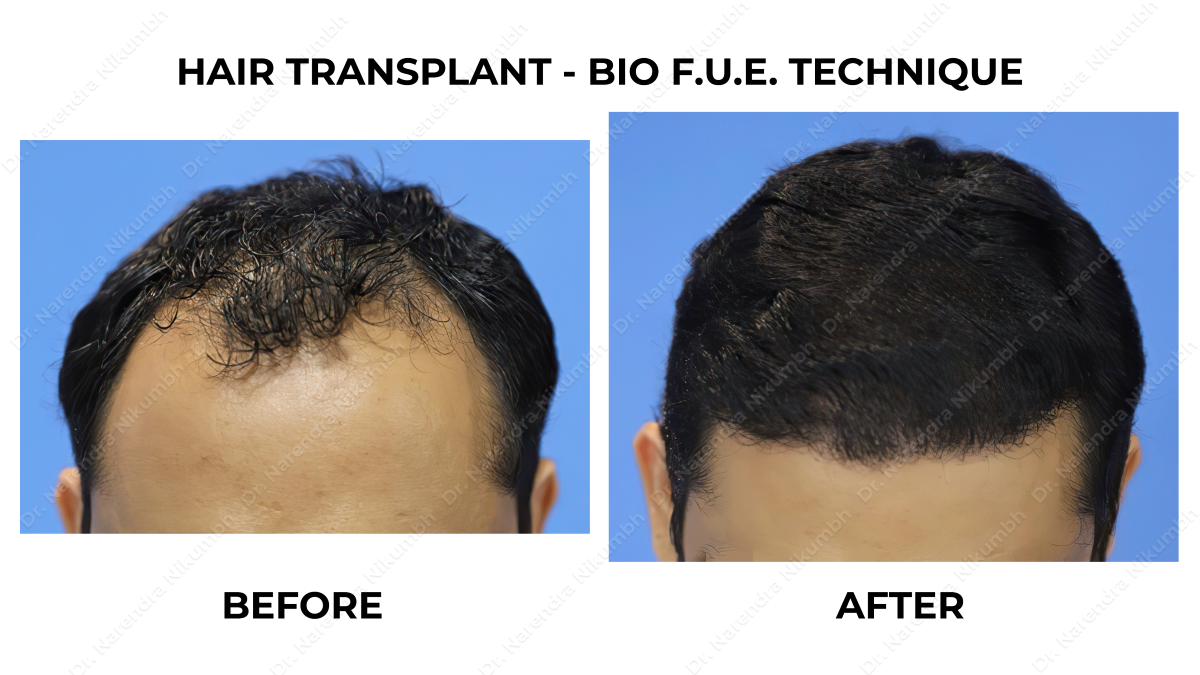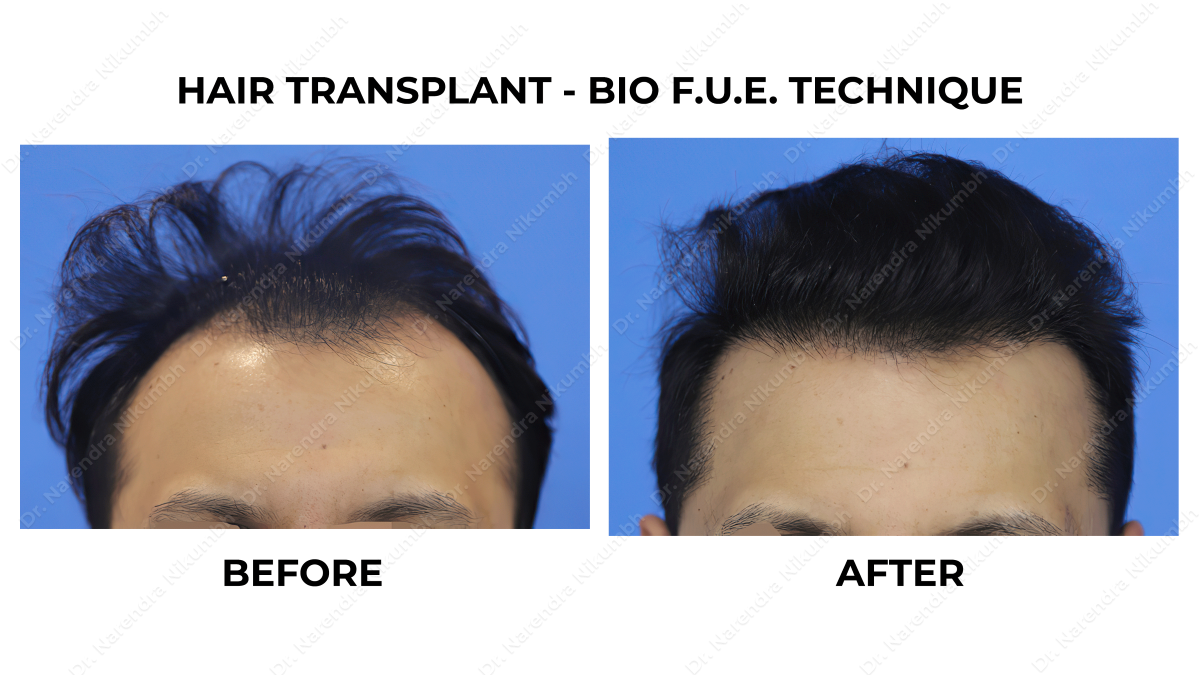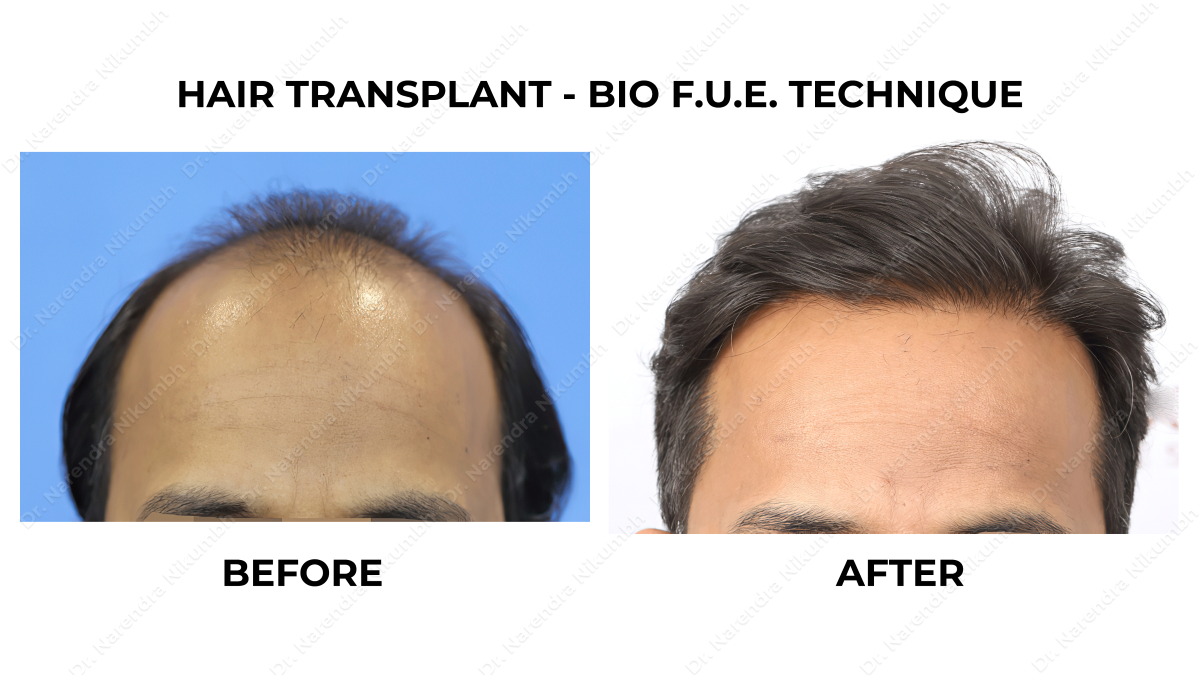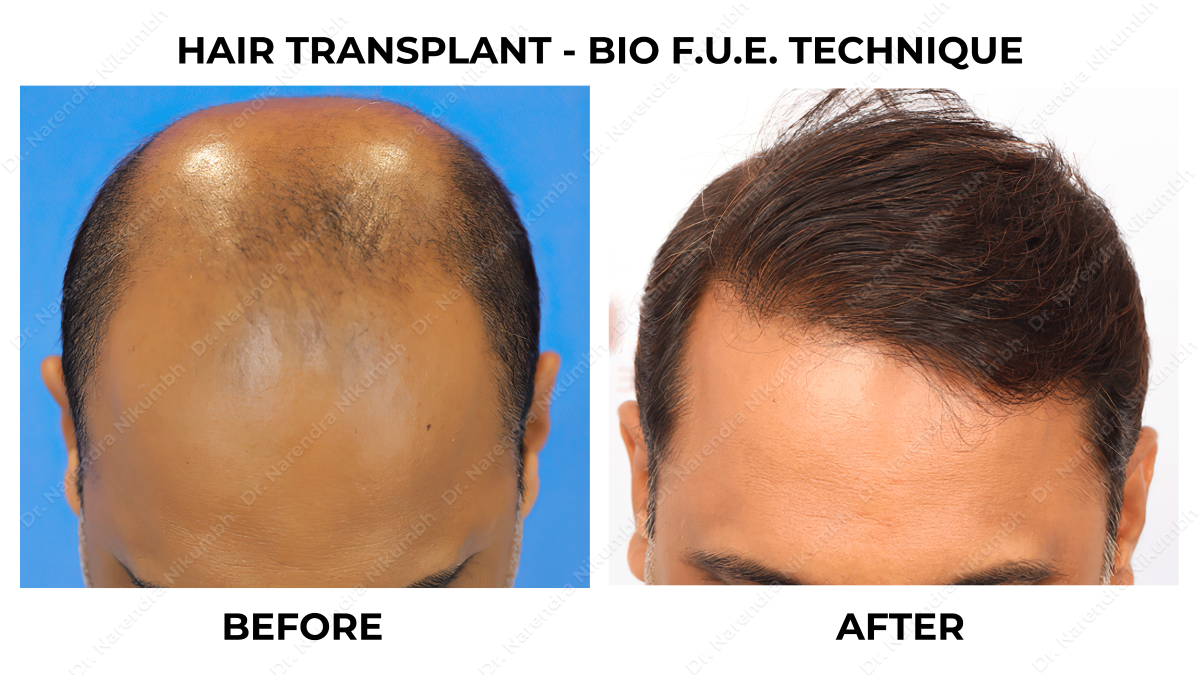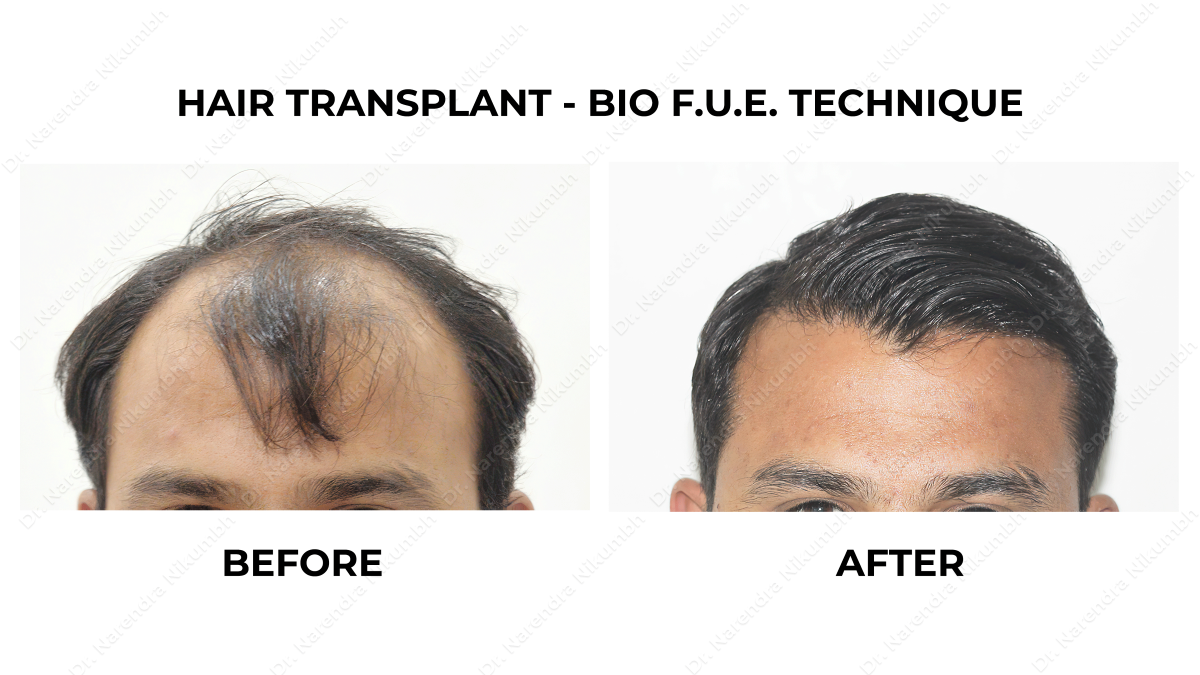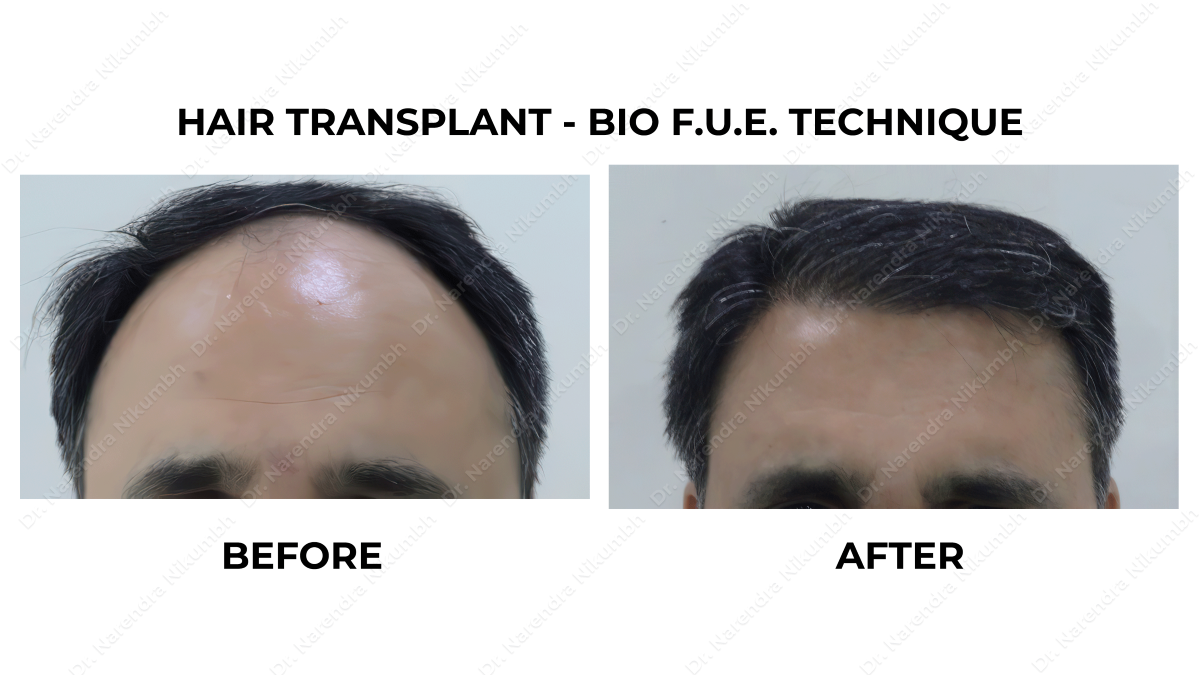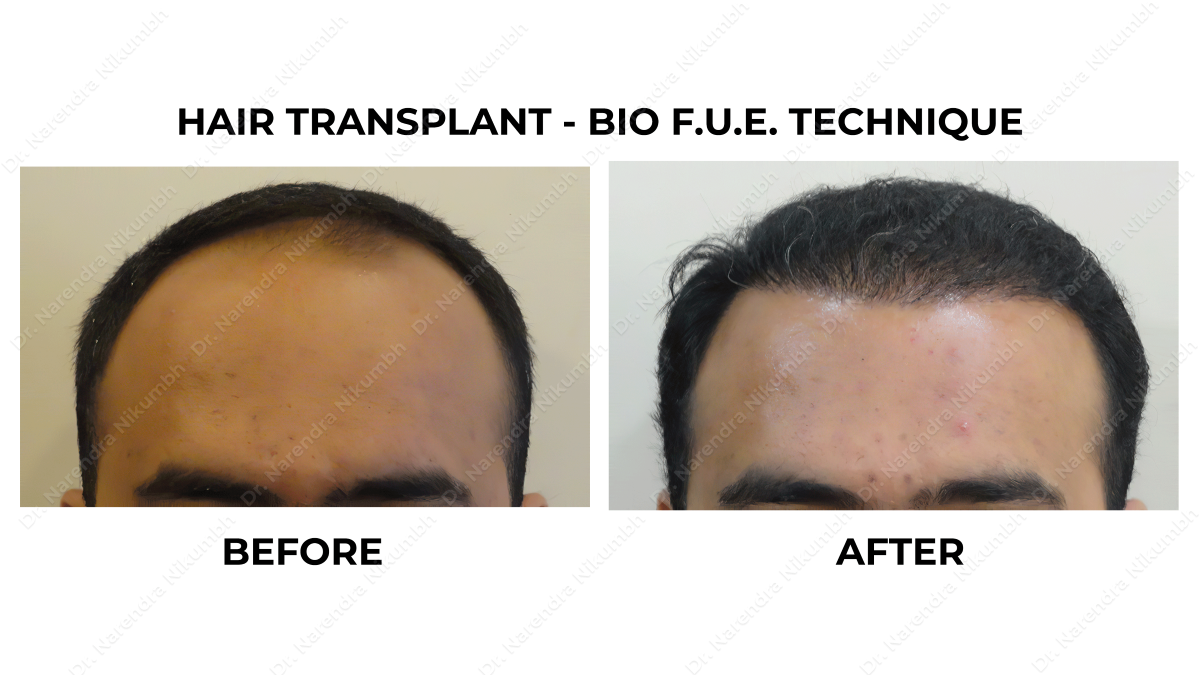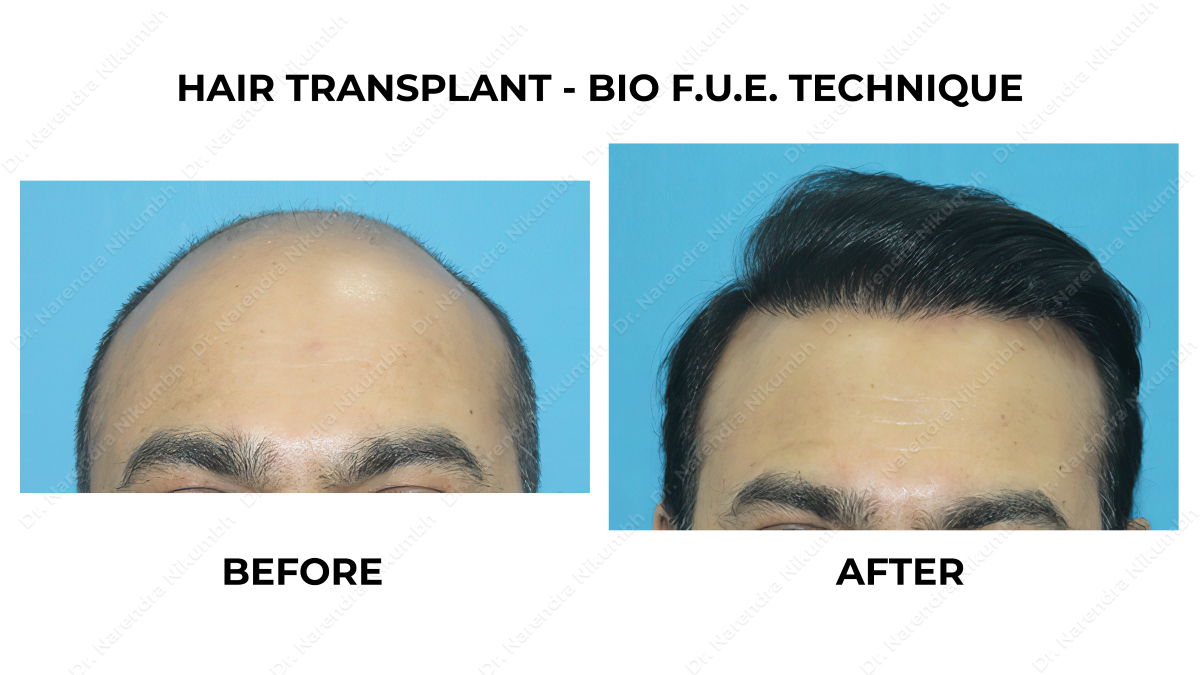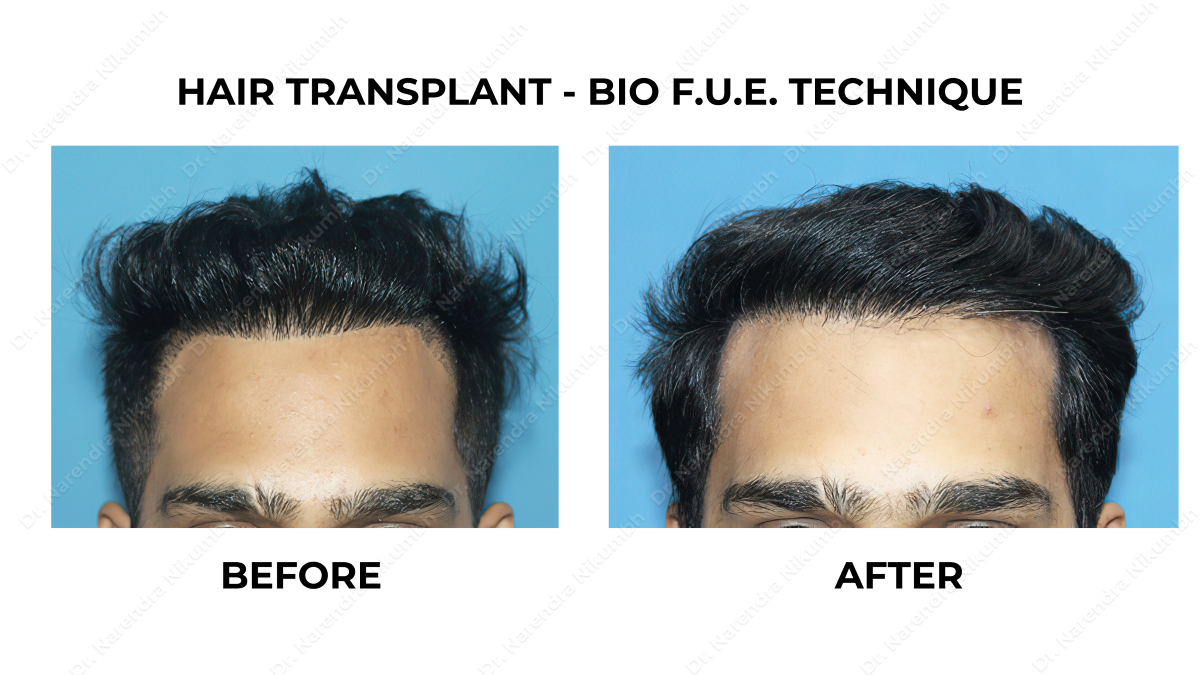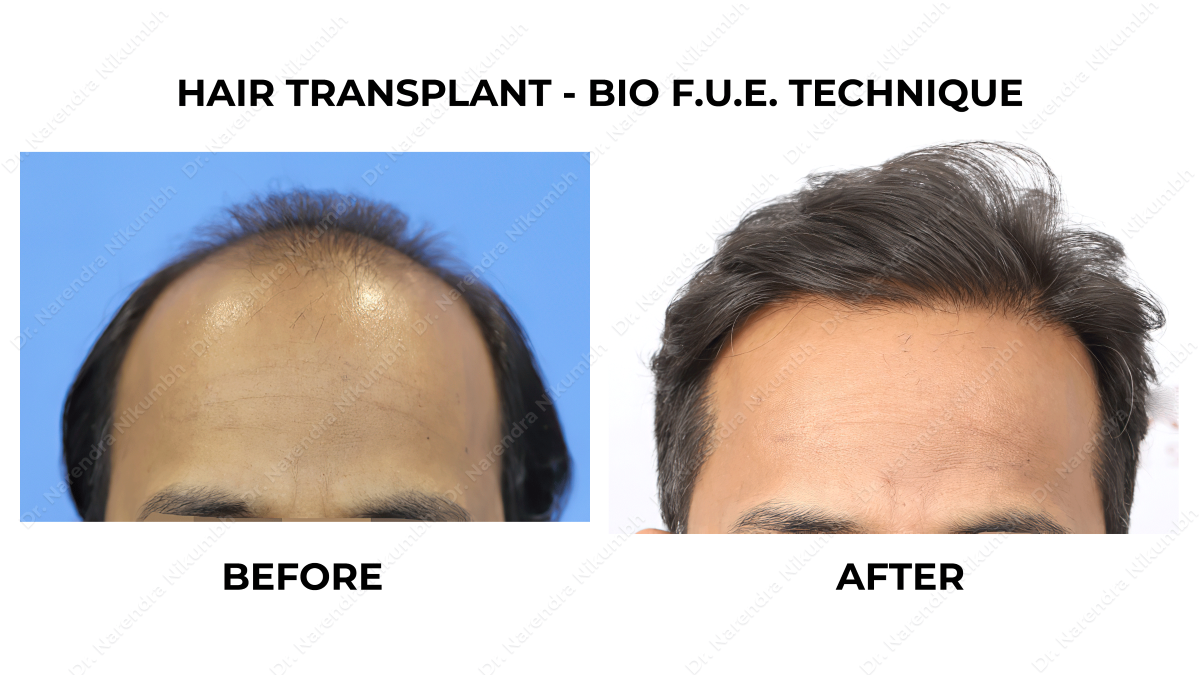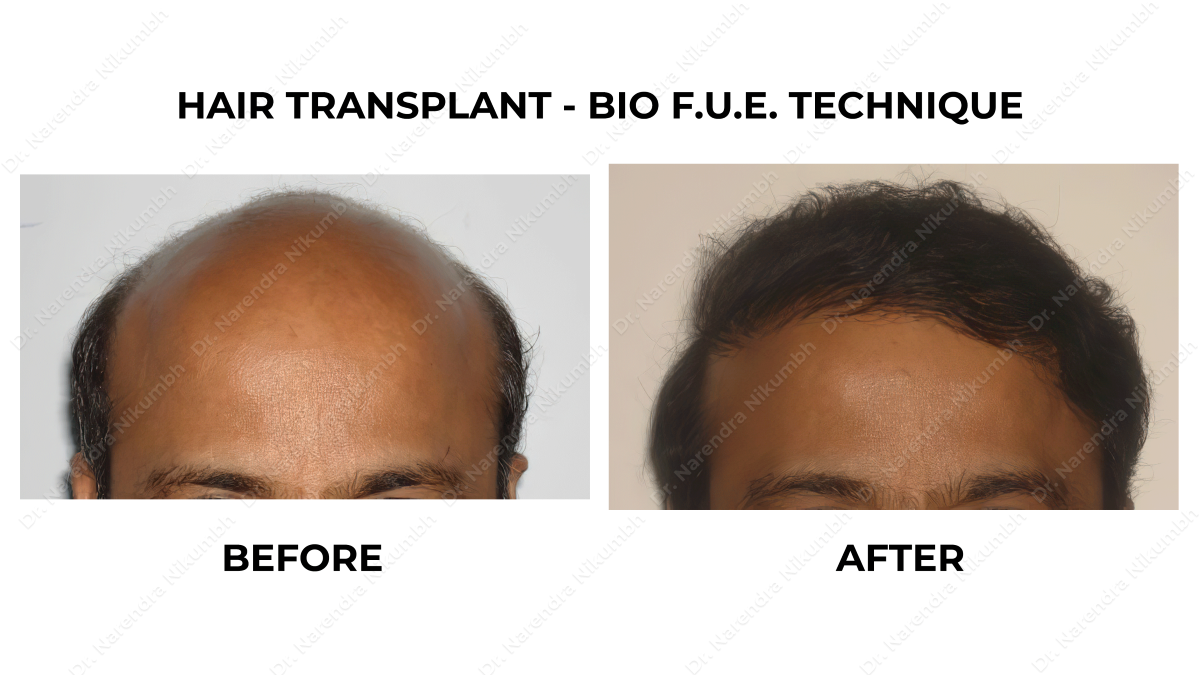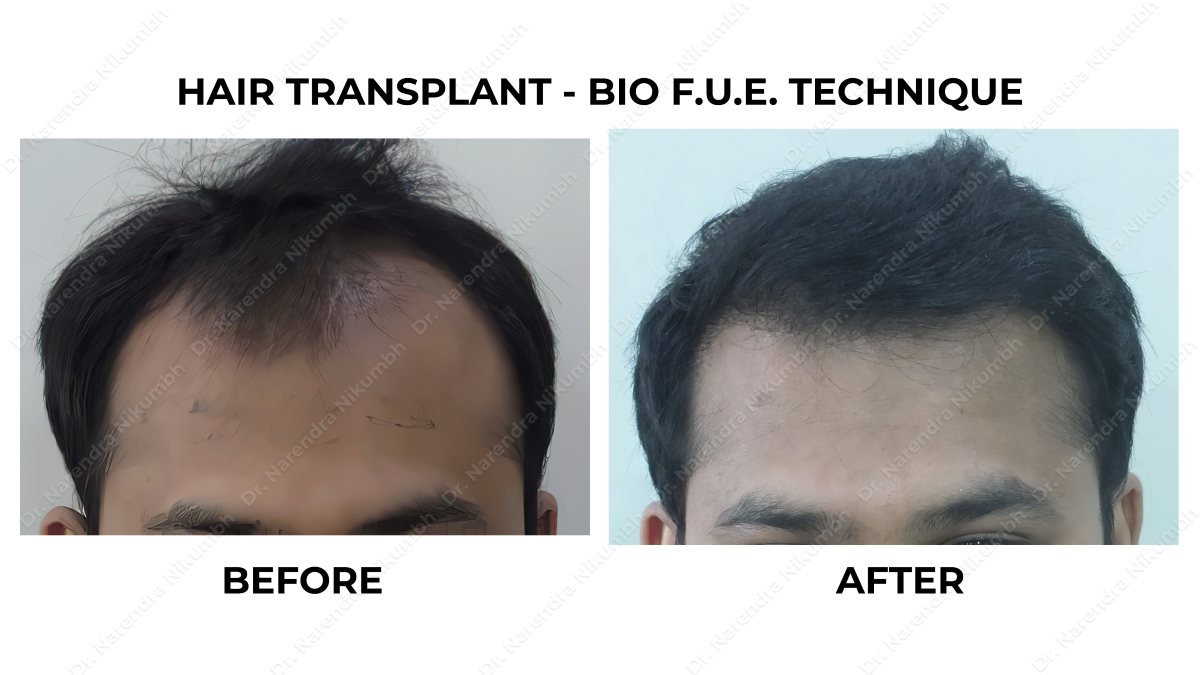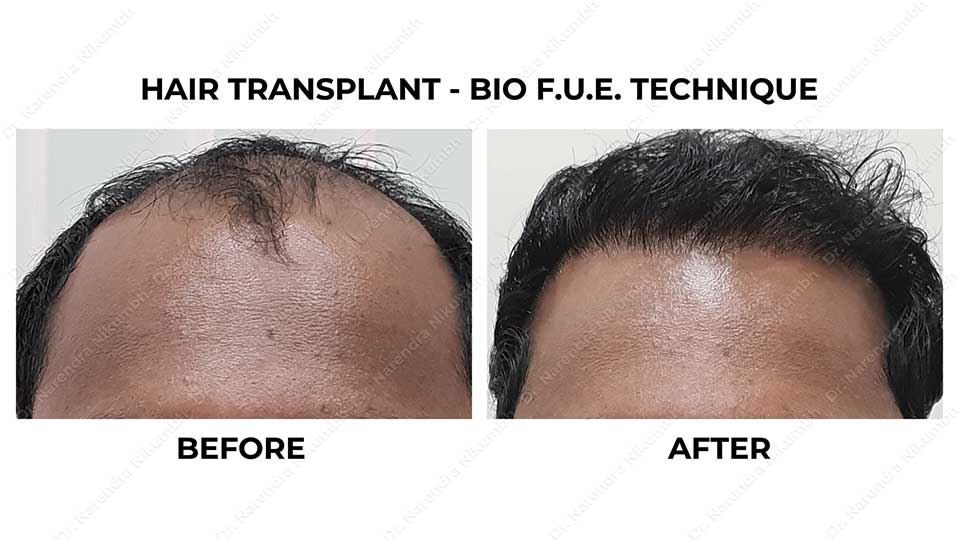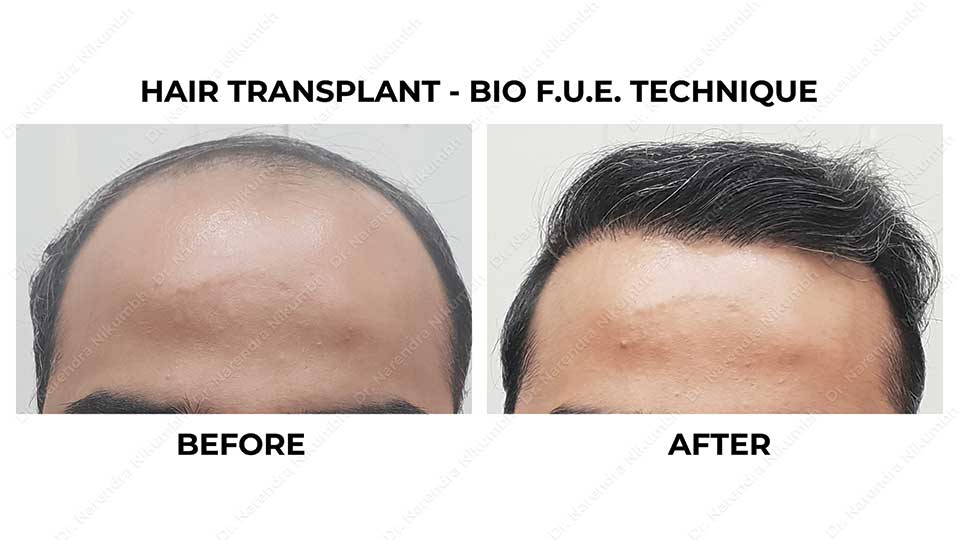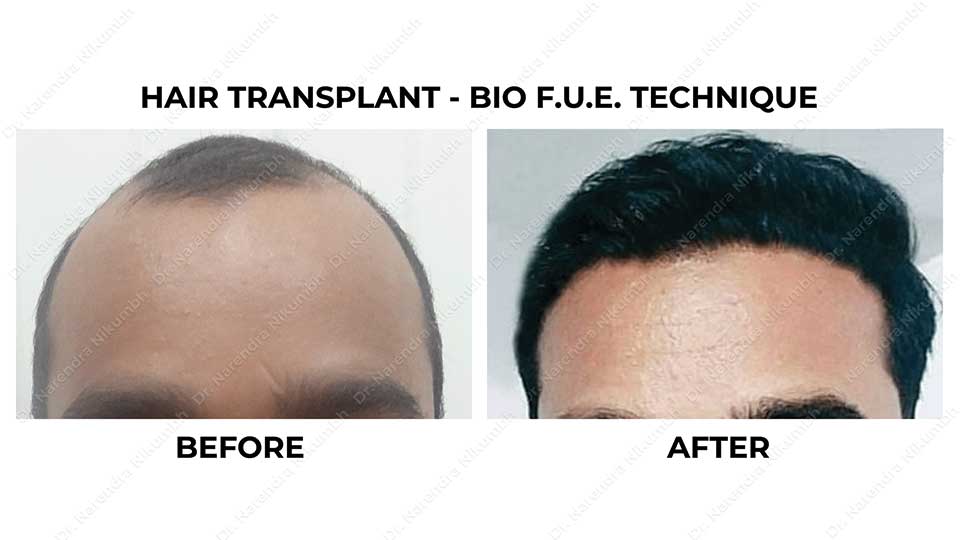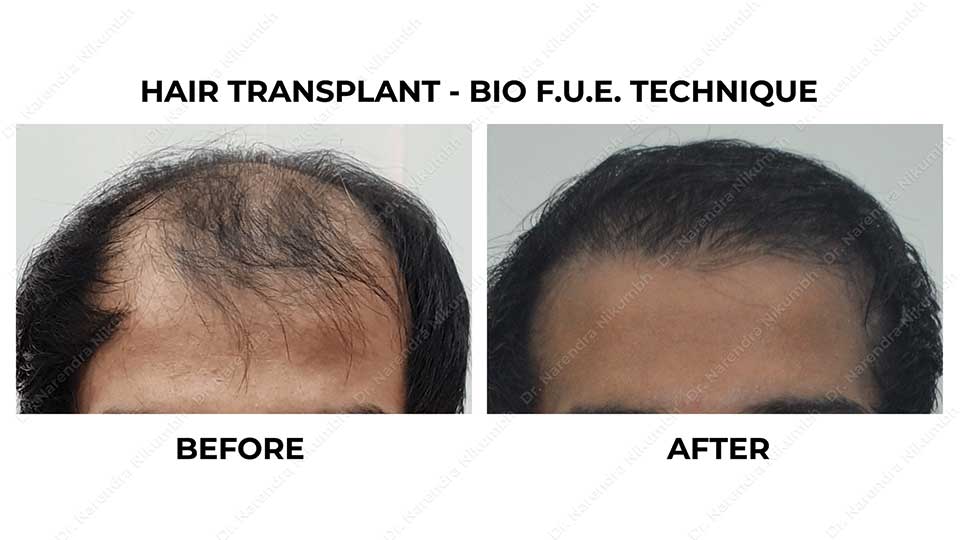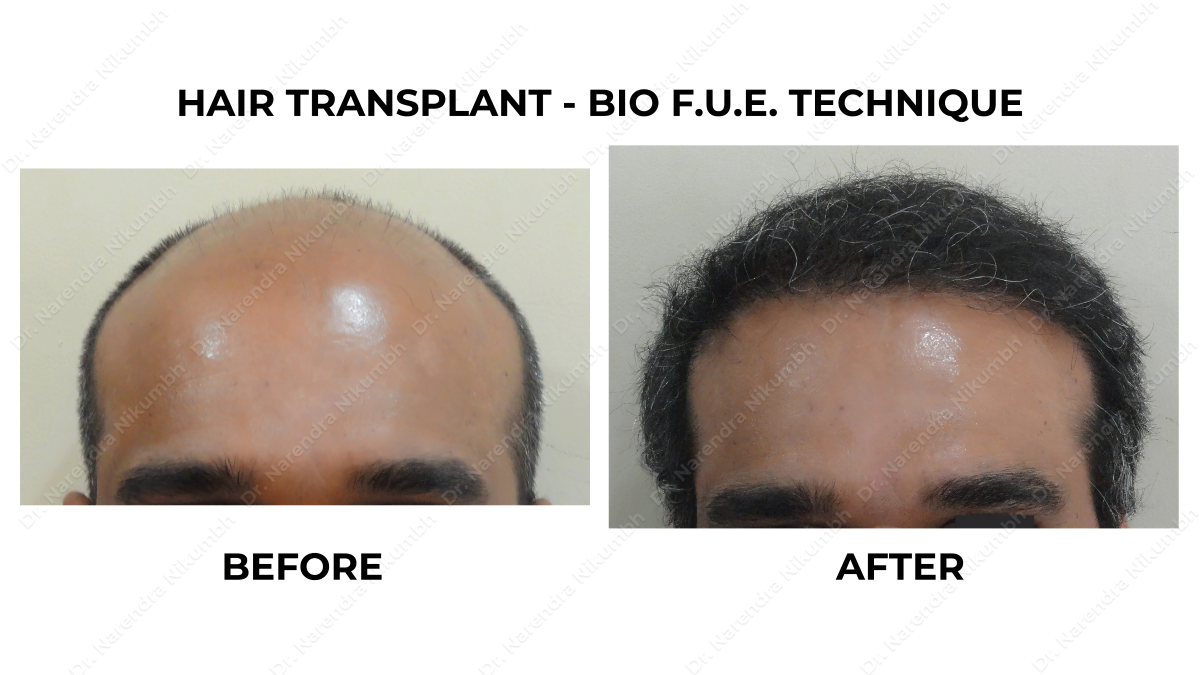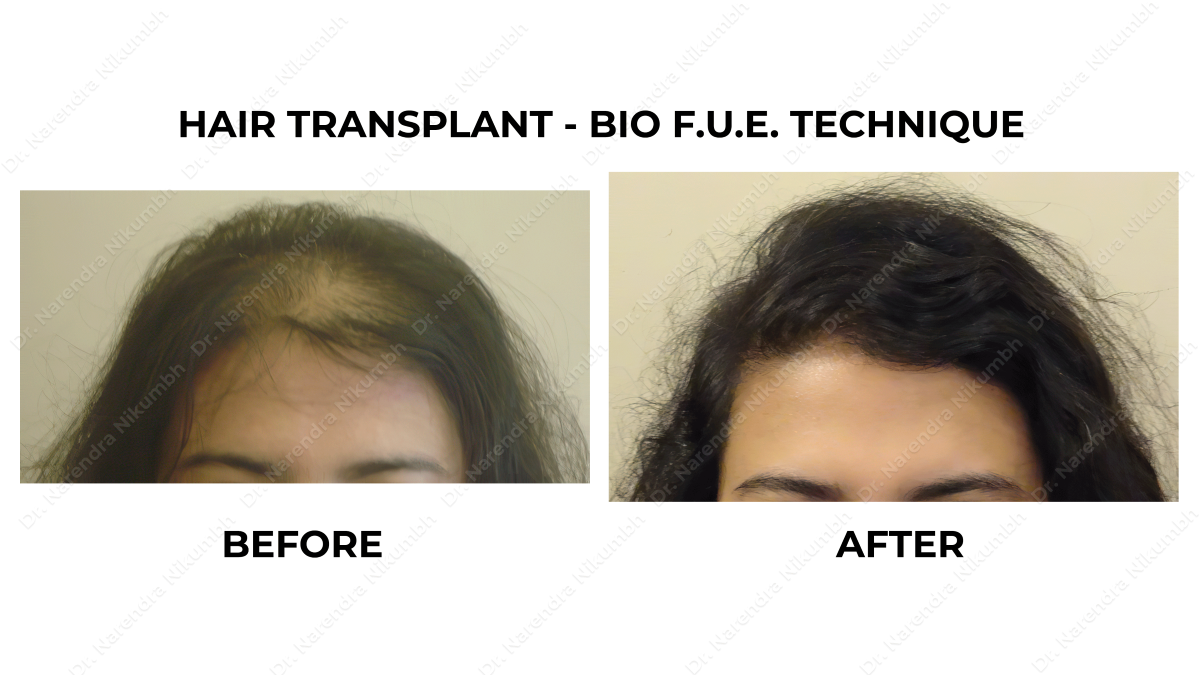Best Hair Transplant Clinic in Thane
Hair transplantation can be defined as ‘The permanent solution for hair loss’. A hair transplant operation can be expressed as; a microsurgical procedure that is performed in a hospital surgical setting. The concept ‘microsurgical operation’ implies that; a hair transplant procedure will be carried out with minimal surgical intervention unlike traditional surgery.
A hair transplant operation, is an effective solution for individuals experiencing ‘Male Pattern Baldness” which is also referred to as “Androgenetic Alopecia”. Apart from these, individiuals who have scars or have lost hair due to various kinds of hair diseases can also safely undergo a hair transplant surgery.
1. Individuals aged between 20 and 60 years can undergo a hair transplant surgery.
2. The patient who will undergo a hair transplant surgery will roughly need 3 days for pre-operative preperation and for recovering.
3. Although the duration of surgery varies according to the number of grafts that will be transplanted, it usually lasts about 5 to 8 hours.
4. In order to respond to possible complications, the operation must be conducted in a fully-equipped clinic.
5. A hair transplant procedure is performed with a doctor and at least 2-3 medical technicians.
6. It may take around 9 to 12 months to see the final outcome of hair growth. Starting from the day following the operation, the patient can expect to see hair growth until the 12th month.
At Infinity Aesthetics Clinic, Dr. Narendra Nikumbh is the Best Hair Transplant Surgeon in Thane and Mumbai, provides the best Hair Transplant Surgery in Thane and Mumbai. We as a team work closely with every client to deliver a customized treatment crafted around the individual’s hair and skin type, using the latest technologies, systems, devices and products and this is what makes Infinity Aesthetics Clinic the Best Hair Transplant Clinic in Thane and Mumbai.
The entire micro-needling process with a Dermapen takes place at a microscopic level and there is minimal discomfort. There may be some redness, depending on the depth to which the needles have penetrated.
Positive changes in the skin are apparent within a week of the treatment. More importantly, the rejuvenation process which has been actively stimulated, continues for months after the procedure. Your skin renews itself every 40 days, so if your Dermapen sessions are synchronised with this cycle, skin remodelling can be quicker and more satisfying.
There are 2 main types of hair Transplantation techniques-
- FUT (Follicular Unit Tranplantation)
- FUE (Follicular Unit Extraction)
Hair transplants have come a long, long way since the early days. Hair transplants conducted with the FUT technique during the 80s & 90s, has been replaced by the FUE method which was developed in the early 2000s and introduced in 2005. Even though the technique has been in continuous development with some further ongoing refinements, the basic principles of FUE remain the same. Today, this technique continues to be regarded as the Gold standard of hair transplant surgery by majority of the surgeons.
1. Hair transplantation can result in a more natural-looking and denser appearance.
2. It is a permanent solution for treating moderate to severe hair loss.
3. It is a comfortable technique that is designed to ensure patients with the least amount of discomfort5
4. Leave no external scars after the procedure.
5. FUE hair transplant technique offers patients faster recovery times; They can conveniently return to their daily routine and are able to travel 1-3 days after the procedure.
6. With the right operation plan, no damage will be caused in the donor area and no change in the appearance even after multiple operations.
7. 98% of the transplanted grafts grow as normal hair.
The main advantage of using the FUE technique for hair transplantation that one should remember is that, it leaves no scars and its recovery time is significantly shorter than FUT technique. The success of the operations has also increased as a consequence of the advances in medical devices utilized in the FUE technique. With constant ongoing research and development different methods of FUE have been invented and practised.
FUE technique can be performed with a variety of different instruments. As a consequence of this, the technique is known with a few different names, such as:
1. Advanced FUE
2. DHI technique
3. Bio enhanced FUE
4. Cold Laser FUE
Any type of FUE is a hair transplant technique that doesn’t leave any marks or require any stitches/sutures. Whereas FUT may leave visible scars as it requires deep stitches/sutures.
1. Consultation:
In this step a thorough analysis of the patient’s recipient and donor area is made, taking into consideration the expectations and practical aspects the surgeon develops an operation plan and creates the hairline design that suits patient’s facial profile and also meets the reality criterias.
2. Preparation:
It covers the stages of pre-operation precautionary testing, sterilization and lastly anaesthetising the operation area on the day of the procedure.
3. Harvesting of Hair Follicles –
In FUE technique the hair follicles to be collected are extracted so in an extremely & highly aesthetic success rate. With the FUE method the follicles are harvested one by one with cylindrical needles. This way the follicles can be harvested with minimal distortion.
Depending on the length of each follicular unit it is important to utilize needles/punches that have a diameter of 0.7mm to 0.9mm or if the follicular unit grafts contains 3-4-5 hairs needles/punshes with a diameter of 1.0 mm should be used. The sharpness of the needles/punshes as well as being single-use with each patient, are the elements that have a considerable impact on the operation’s success. Another important factor is to extract hair follicles with precise accuracy so as to avoid any follicular damage. For example; if the person who is having a hair transplant has very curly hair, by using a curved punch called u-graft during the process of extracting follicular units, the risk of follicular damage can be eliminated. All of these elements are refinements planned by the doctor prior to the operation, which are tailored specifically to each patient’s condition.
Whereas with FUT involves extraction of strip of skin and then it is sliced to obtain hair follicles.
4. Recipient site preparation & creation of incisions –
In the classic FUE technique, steel blades/ fine needles are utilized for creating the recipient sites within the transplanted area. Nowadays in advanced FUE, much sharper and smoother blades/needles are used. The use of these blades/needles makes it much easier to determine the correct angle and direction of the transplantation.
While making slits in the recipient area, it is very important to follow the direction and angle of the existing hair in that region.
With the use of latest blades/needles the healing process is much shorter.
For each patient, the blades/needles used should be new and should not be reused.
5. Transplantation of hair follicles –
The final stage, which is transplanting the hair follicles; is the process of transplanting the follicles one at a time at an angle of 40-45 degrees, within the incisions that have been created at directions that enables accurate placement. All 3 phases have certain specific technicalities and the most important technicality within all stages is certainly experience.
6. Post-operative processes:
This stage incorporates the processes of wound-dressing for the donor site.
7. Post-operative care & clot removal wash:
This is washing process that is to be carried out for 7 days. Both the donor and the transplanted area will be sensitive during this period, so it important to carry out the washing process with extra care.
DHI Hair Transplant is the process of extracting hair follicles from the donor area via utilizing a micro motor and then transplanting them into the receipt site using a pen-like device that contains a hollow needle. The first thing that comes into mind when we say DHI is usually the FUE method, but there are actually some differences between the 2 methods.
DHI method enables the hair transplant to be performed without shaving the head. Hair follicles are transplanted in about 1-2 minutes after the extraction process so they only remain outside the body for a very short time period. It is easier to transplant between hair strands if the patient has nonbalding areas on his/her scalp. It is possible to achieve higher density of hair, especially when the area to be transplanted is not spacious.
Bio FUE hair transplant is an advanced and improved version of FUE hair transplant, which results in more better, faster and natural hair growth. The main aim of this latest technology treatment is to supercharge FUE results by combining regenerative cell-based hair growth stimulating factors in the surgical process. The procedure is similar to the advanced FUE hair transplant but with special modifications that help achieve better outcomes.
Bio stimulated FUE uses the power of our body’s internal growth stimulating cells to enhance the outcome of Hair Transplant. Hair Transplanted using Bio stimulated FUE grow faster, longer, enhances their ability to survive for longer periods, grow stronger and have better texture. The treated transplanted area also heals rapidly.
The overall duration of post operative healing is significantly reduced with this technique allowing out patients to resume and enjoy their lives as early as possible. Thus, it saves the patient’s time.
Hair Transplantation with Laser Hair Therapy, is the latest addition to the continuously evolving field of Hair transplantation. Application of low-level laser therapy also known as “Cold laser with hair transplantation”. The main objective of applying low level laser therapy after hair transplantation is to speed up the healing time, to help reduce side effects such as redness, swelling as well as pain within the operated area and to promote the fastest hair growth possible. In individuals who have undergone hair transplantation, laser therapy helps reduce the recovery time and also provides good pain control, which is linked to better wound healing. This laser application allows to penetrate without heat, it has no side effects such as a burning sensation.
For treating hair loss conditions, we use a different low level laser device. When it is applied on the scalp twice a week for 20 minutes, the progression of hair loss stops and with long-term use it is found to have a promoting effect on hair growth. After a certain improvement level is reached, it is possible to sustain the improvements obtained by reducing to one session carried out in a week.
Laser hair therapy is a clinically proven, effective treatment for men and women who have mild to moderate hereditary pattern hair loss. Laser hair therapy increases the production of adenosine triphosphate (ATP), which induces the release of nitric oxide. This in turn leads to enhanced hair growth. Additionally, it has been also observed that laser therapy was capable of reducing scalp tissue DHT, which may help slow, or even stop hair loss and improve hair growth.
Laser hair therapy that uses medical-grade lasers delivers low level laser light to the scalp. Laser therapy stimulates the hair follicles simply by increasing the blood flow to both the hair follicles and the surrounding scalp. Through this treatment you can reverse hair thinning and stimulate the natural growth cycle of hair. The result is increased hair volume and improved hair health.
The low level laser therapy device that we use at our clinic consists of mutiple modules, with each transmitting energy from hundreds of sources.
Its application that possesses 6 different therapeutic frequencies, can be specially adapted to the individual needs of our patients’.
FUT i.e. Follicular Unit Tranplantation technique involves removal of a strip of entire marked area of scalp skin from the back of you head. This requires suturing of the already thick and tense scalp skin ends for closure of the wide wound created. The extracted strip of scalp is then cut and used to isolate hair follicles from the skin. Main problem with the technique is a very possible chance big scar that can form over the suture area due to thick and tense scalp skin. Also this techniques involves deep sutures which sometimes may cause micro damage to the nerves of that area leading to decreased or altered sensations. The recovery period with this technique is also significantly more.
There is a common argument that F.U.T. is better than F.U.E. n contrast to the common argument that the hair yield from FUT method is better than the FUE technique, practically thats not always true plus the risk of visible scar can not be neglected.
1. Experience –
An experienced surgeon has the knowledge, understanding and skills to identify with the patients needs and the variety of possible outcomes. This helps in ensuring that the patients are booked in for the right procedures. When it comes to the safety of surgery, experience and skills of the surgeon are the two important aspects that matter the most. Whats the point of undergoing an aesthetic surgery like hair transplant if it is not safe?.
2. Profession –
Hair transplant operations whether FUE or FUT must only be conducted by specialized doctors. People may have different health situations and hair loss conditions, a specialized doctor can examine and make the correct diagnosis. A duely qualified surgeon can determine a patients suitability for the operation, taking into account their hair loss conditions and provide them with all the detailed instructions on what should be done or avoided prior, during and after the operation. A specialist will care about his/her patients’ health & about the overall final outcome of their hair transplant procedure.
3. Artistry –
For a successful and natural looking hair transplantation result, the hairline design and angle of the hair should be natural and compatible with the patient’s facial shape and appearance. This requires skill, experience and an aesthetic understanding. There are plenty of examples of weird looking hair line designs and not so dense hair transplants on the internet.
4. Instrumentation & Infrastructure –
Using latest and advanced instruments helps the surgeon to precisely make the extraction of grafts from donor area and creating slits in the recipient area. This leads to superior outcomes and ease of patients. Back up infrastructure for handling emergencies situations is also extremely important. Hence you should choose a clinic with quality health care and with all the necessary safety measures.
5. Understanding the patient –
The starting point of an operation is the medical examination. At this stage, it is important to understand the patient in order to conduct a needs analysis and develop a good operation plan. A clinic should always act in accordance with these principles and ensure whats best for our patients.
For individuals experiencing hair loss, a hair transplant may also be in need of other sources. As an example, if the donor hair, which takes place at the back of head, are not sufficient to cover all areas of baldness, the chance of a successful hair transplant is unlikely. For this reason, to be able to perform a more successful hair transplant operation, grafts from different parts of the patient’s body can also be used. And this extraction needs skill and experience.
I. Beard to Head – Hair Transplant –
Hair transplant using beard grafts, is generally performed in cases where the patient has inadequate scalp donor supply and when the bald patches are too wide to be covered. Beard grafts remain in the growth (anagen) phase for long periods and after the back of the scalp, are an excellent alternative donor source for hair transplantation. Beard grafts are known to be thicker than the grafts at the back of the head. For this reason, to provide better volume in the transplanted area, hair grafts extracted from the beard are transplanted in the top and crown area, but it may not be the best option for front hair restoration.
II. Body to Head – Hair Transplantation –
For men planning on undergoing a hair transplant, body hair is considered as a 3rd source of grafts recipient. If grafts extracted from the back of the head, then the beard area are still not sufficient for coverage, among other options, chest hair can be considered as a good alternative source of hair follicles in hair transplantation.
There are 2 underlying reasons why body hair is considered as the 3rd additional donor source in hair transplantation.
a. Body hair grafts, particularly chest hair, have a similar structure as beard grafts; they are thick and contain 1-2 hairs.
b. As the anagen phase of body hair is much shorter; body hair grows shorter.
This being said; hair grafts obtained from the chest cannot be used in front hair restoration.
If you are considering a hair transplant or would like to obtain more information on hair transplantation, feel free to get in touch with us.
Hair tranplant even though not a full fledged surgery, it involves various risk factors which if ignored can lead to disasterous outcomes in terms of looks, grafts survivability or even to patient’s health. It being a procedure which is done over a pretty long duration of 6-8 hours exposes the patient to various complications like infections, bleeding etc
All surgeries carry some degree of risk. Some of the possible complications of hair transplant surgery include:
1. Risks of anaesthesia, including allergic reaction.
2. Surgical risks such as bleeding or infections.
3. Scars that may be severe, raised, red, inflamed and itchy
4. Nerve damage, including permanent loss of sensation – This exclusively may occur in FUT type of surgery
5. Death of the Hair grafts if proper preservation care is not taken
6. Tissue death along the wound – This exclusively may occur in FUT type of surgery
7. Further surgery to treat complications.
1. Physical health – a detailed physical examination helps the surgeon decide if the treatment is appropriate.
2. Medical history – pre-existing medical conditions and surgeries influence the decisions about hair transplantation, including the type of anaesthetic that is used.
3. Hair evaluation – includes analysis of the hair growth pattern, the extent of hair loss, the hair loss history in the family and any prior surgical or medical treatments for hair loss a person may have had.
4. Risks and possible complications – it is important that the patient understands the risks and complications so that he/she can weigh up the gains and risks of the operation.
5. Medication – details about any medication that you take on a regular basis or have recently taken, including over-the-counter preparations such as fish oils and vitamin supplements beacuse these affects the planning of the surgery.
6. Past reactions to medication – if you have ever had a bad reaction or a side effect from any medication or even food material, e.g. anaesthesia, fish etc, its important that you bring to docotr’s notice.
7. Preparation for surgery – a detailed instructions manual to the patients about what they should do at home to prepare for surgery. e.g. you may be advised to take a particular medication or alter the dose of an existing one.
Getting Hair Transplant done from an experienced, expert and qualified surgeon reduce the associated risks and still, if anything odd happens, you are assured of being in safe hands.
Hair tranplant even though not a full fledged surgery, it involves various risk factors which if ignored can lead to disasterous outcomes in terms of looks, grafts survivability or even to patient’s health. It being a procedure which is done over a pretty long duration of 6-8 hours exposes the patient to various complications like infections, bleeding etc
All surgeries carry some degree of risk. Some of the possible complications of hair transplant surgery include:
1. Risks of anaesthesia, including allergic reaction.
2. Surgical risks such as bleeding or infections.
3. Scars that may be severe, raised, red, inflamed and itchy
4. Nerve damage, including permanent loss of sensation – This exclusively may occur in FUT type of surgery
5. Death of the Hair grafts if proper preservation care is not taken
6. Tissue death along the wound – This exclusively may occur in FUT type of surgery
7. Further surgery to treat complications.
1. Physical health – a detailed physical examination helps the surgeon decide if the treatment is appropriate.
2. Medical history – pre-existing medical conditions and surgeries influence the decisions about hair transplantation, including the type of anaesthetic that is used.
3. Hair evaluation – includes analysis of the hair growth pattern, the extent of hair loss, the hair loss history in the family and any prior surgical or medical treatments for hair loss a person may have had.
4. Risks and possible complications – it is important that the patient understands the risks and complications so that he/she can weigh up the gains and risks of the operation.
5. Medication – details about any medication that you take on a regular basis or have recently taken, including over-the-counter preparations such as fish oils and vitamin supplements beacuse these affects the planning of the surgery.
6. Past reactions to medication – if you have ever had a bad reaction or a side effect from any medication or even food material, e.g. anaesthesia, fish etc, its important that you bring to docotr’s notice.
7. Preparation for surgery – a detailed instructions manual to the patients about what they should do at home to prepare for surgery. e.g. you may be advised to take a particular medication or alter the dose of an existing one.
Getting Hair Transplant done from an experienced, expert and qualified surgeon reduce the associated risks and still, if anything odd happens, you are assured of being in safe hands.
